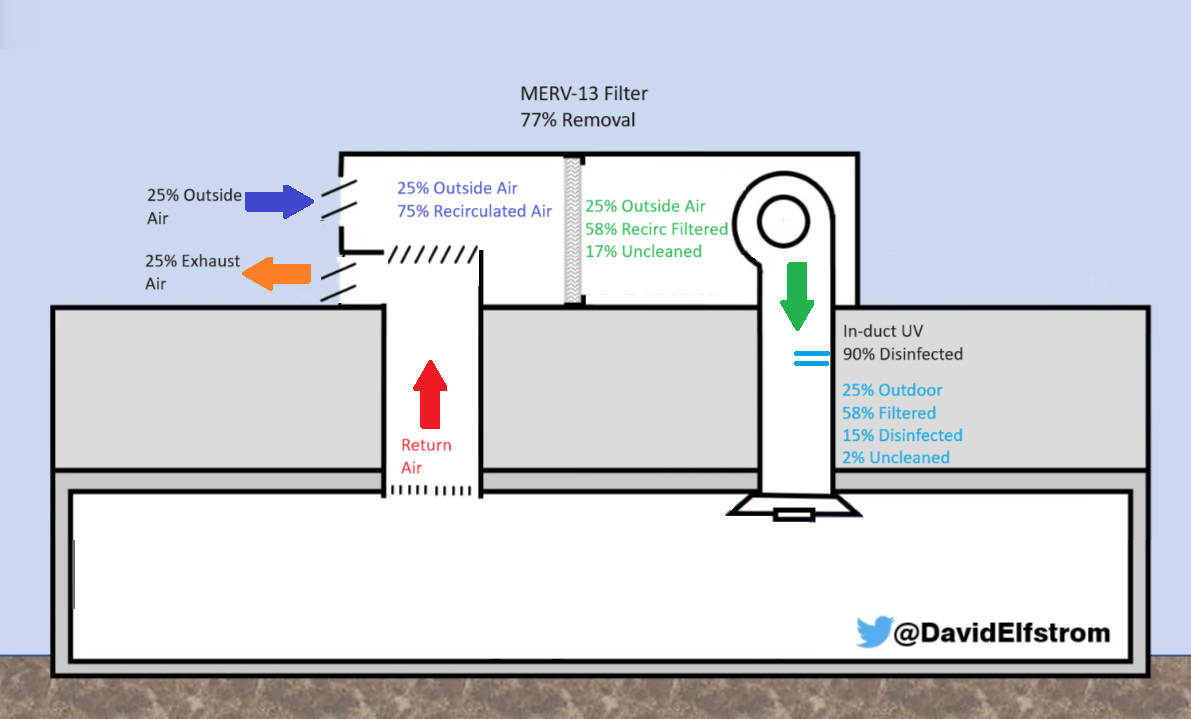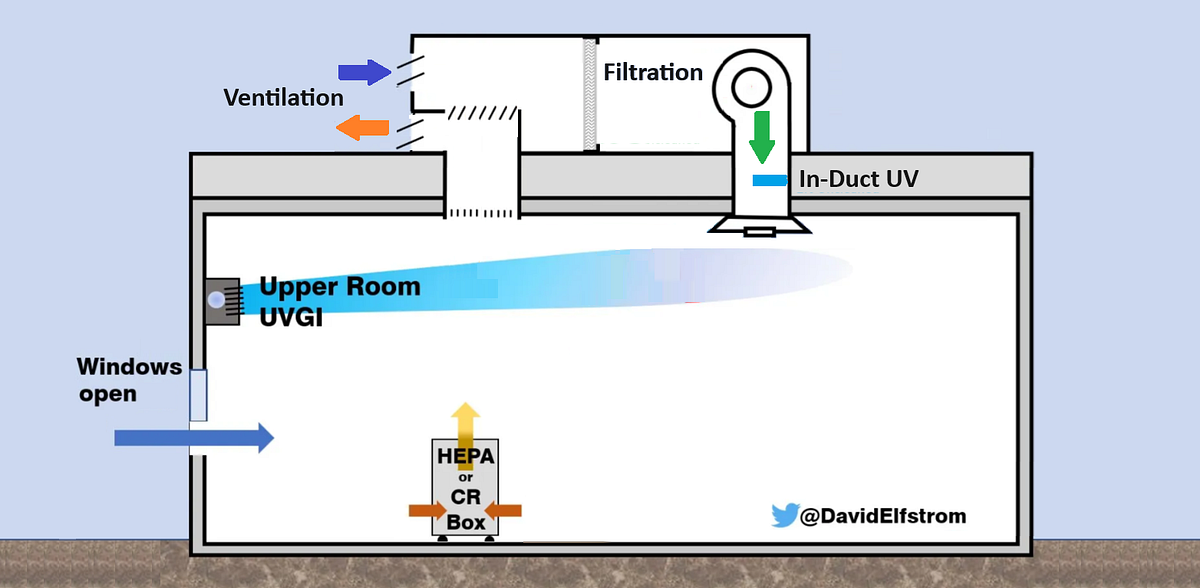When choosing the type of ventilation to use, you might think it’s a simple decision. But the truth is, the right choice can make a huge difference in your comfort, health, and energy bills.
You want fresh air flowing in without losing heat or letting in unwanted noise. So, how do you pick the best option for your space? Keep reading, because understanding these key points will help you make a smart choice that fits your needs perfectly.
Don’t settle for less when it comes to the air you breathe every day.
Types Of Ventilation Systems
Choosing the right ventilation system affects air quality and comfort. Different types suit various building needs and climates. Understanding each type helps in making a smart choice. Below are the main types of ventilation systems to consider.
Natural Ventilation
Natural ventilation uses windows, vents, and openings to move air. It relies on wind and temperature differences. This method is energy-efficient and low-cost. It works best in mild climates and buildings with good airflow paths. Natural ventilation can reduce indoor pollutants and humidity.
Mechanical Ventilation
Mechanical ventilation uses fans and ducts to control airflow. It provides consistent and controlled air exchange. This system is ideal in tight buildings or areas with poor outdoor air quality. Mechanical ventilation can filter and condition the air. It requires electricity and regular maintenance.
Hybrid Ventilation
Hybrid ventilation combines natural and mechanical methods. It switches between both depending on conditions like weather and air quality. This approach balances energy use and indoor comfort. Hybrid systems offer flexibility for different seasons and building uses. They optimize ventilation without wasting energy.

Credit: itsairborne.com
Factors Affecting Ventilation Efficiency
Choosing the right ventilation type depends on several key factors. These factors influence how well the ventilation system works. Understanding them helps improve air quality and comfort inside buildings.
Climate And Weather Conditions
Climate plays a big role in ventilation efficiency. Hot and humid areas need systems that reduce moisture and heat. Cold climates require ventilation that keeps warmth inside. Wind speed and direction also affect how air moves through a building. Systems must adapt to seasonal changes for best results.
Building Design And Layout
The shape and size of a building affect ventilation. Open floor plans allow better airflow than many small rooms. Window and door placement impacts how air enters and exits. Ceiling height and insulation also influence ventilation needs. Proper design reduces energy use and improves comfort.
Airflow And Circulation Patterns
Good airflow means fresh air reaches all areas evenly. Poor circulation creates pockets of stale air. Airflow depends on vents, fans, and natural openings. Using fans can boost movement in areas with low air exchange. Understanding how air flows helps place ventilation components correctly.
Energy Efficiency Considerations
Energy efficiency plays a key role in choosing ventilation systems. It affects both environmental impact and monthly utility bills. Efficient ventilation keeps air fresh without wasting power. This means smart choices save money and protect the planet.
Heat Recovery Ventilation
Heat recovery ventilation (HRV) systems transfer heat from outgoing air to incoming air. This process reduces heating and cooling demands. HRVs keep indoor temperatures steady while bringing in fresh air. They reduce the need for extra heating or cooling, saving energy.
HRVs work best in climates with extreme temperatures. They help maintain comfort without opening windows. This limits heat loss and lowers energy bills.
Energy Consumption Of Fans And Equipment
Fans and equipment power the ventilation system. Their energy use varies widely. Look for models with low wattage and high efficiency ratings. Variable speed fans adjust airflow based on need, cutting power use.
Regular maintenance keeps fans running smoothly and efficiently. Dirty or worn parts increase energy consumption. Choose equipment designed for energy savings to reduce costs over time.
Insulation And Airtightness
Good insulation and airtight construction reduce heat loss. Ventilation systems work better in well-sealed buildings. This lowers the load on heating and cooling systems.
Air leaks waste energy by letting conditioned air escape. Sealing gaps and adding insulation improve overall efficiency. Pair ventilation with these measures for best results.
Health And Indoor Air Quality
Choosing the right ventilation system directly affects your health and the quality of the air you breathe indoors. Poor ventilation can lead to buildup of harmful pollutants and uncomfortable humidity levels, which impact both comfort and wellbeing. Understanding how ventilation manages these factors helps you make smarter choices for your living or working space.
Pollutant Removal
Ventilation plays a key role in removing indoor pollutants like dust, allergens, and volatile organic compounds (VOCs). Without proper airflow, these contaminants accumulate, causing headaches, allergies, or worse respiratory issues. Have you noticed increased sneezing or tiredness inside your home? It might be time to rethink your ventilation strategy.
Effective systems use filters and air exchange to reduce airborne particles. Some even target specific pollutants, like carbon monoxide or mold spores. Choosing a ventilation type that actively removes these hazards can dramatically improve your indoor air quality.
Humidity Control
Humidity affects how comfortable and healthy your indoor environment feels. Excess moisture encourages mold growth and dust mites, which trigger allergies and asthma. Too dry, and you risk irritated skin and respiratory discomfort.
Good ventilation helps balance humidity by exchanging stale air with fresh, drier air outside. You can also combine ventilation with dehumidifiers or humidifiers depending on your climate. Think about the humidity levels you experience daily—are they making your space pleasant or problematic?
Fresh Air Supply
Fresh air supply ensures you don’t just circulate the same stale air indoors. It brings oxygen-rich air inside, which supports better concentration and energy. Without enough fresh air, rooms can feel stuffy and cause fatigue.
Natural ventilation, like open windows, works well in some seasons but isn’t reliable year-round. Mechanical systems provide consistent fresh air regardless of outside weather. Consider how often you open windows and if your indoor air feels refreshed afterward—this can guide your ventilation choice.
Cost Implications
Choosing the right ventilation system impacts your budget. Understanding costs helps make informed decisions. Consider installation, maintenance, and energy savings.
Installation Costs
Initial costs vary based on system type. Central systems often need complex ductwork. This increases labor and material expenses. Portable units require less installation effort. They are generally more affordable upfront. Compare costs to find what suits your budget.
Maintenance Expenses
Regular maintenance ensures efficiency. Central systems may need professional servicing. This adds to ongoing costs. Portable units are easier to clean. They often require fewer professional check-ups. Consider maintenance frequency and costs. This helps in budgeting for long-term upkeep.
Long-term Energy Savings
Energy efficiency affects utility bills. Central systems can be energy-efficient with proper maintenance. They may offer significant savings over time. Portable units might use more energy. They can be less efficient in large spaces. Evaluate energy consumption. Aim for systems that reduce monthly energy costs. This contributes to long-term savings.

Credit: itsairborne.com
Choosing The Right Ventilation For Your Space
Choosing the right ventilation for your space is essential for comfort and air quality. The correct system improves airflow and removes pollutants. It also helps control humidity and temperature. Selecting ventilation that fits your needs avoids wasted energy and extra costs.
Assessing Building Needs
Start by examining the size and layout of your building. Larger spaces need stronger ventilation systems. Check the number of rooms and how they connect. Consider the activities inside, such as cooking or heavy machinery. These factors affect the amount of fresh air needed. Also, look at existing ventilation and any problem areas.
Consulting With Professionals
Experts can offer advice based on your building’s unique features. They understand different ventilation types and their benefits. A professional can help design a system that meets safety and health standards. Their insight prevents costly mistakes and ensures proper installation. Many offer energy-saving tips that reduce long-term expenses.
Balancing Efficiency And Budget
Find a ventilation option that fits your budget and runs efficiently. Efficient systems lower energy bills and last longer. Compare upfront costs with maintenance and operation expenses. Sometimes spending a bit more initially saves money over time. Prioritize systems with good warranties and reliable performance.

Credit: elevatedroofing.com
Frequently Asked Questions
What Factors Affect Choosing The Right Ventilation Type?
Choosing ventilation depends on space size, airflow needs, and energy efficiency. Consider climate, building design, and budget for the best option.
How Does Ventilation Impact Indoor Air Quality?
Proper ventilation removes pollutants and moisture, improving air quality. It reduces allergens and odors, promoting healthier indoor environments.
What Are Common Ventilation Types To Consider?
Common types include natural, mechanical, and hybrid ventilation. Each offers distinct benefits based on building use and environmental conditions.
Why Is Energy Efficiency Important In Ventilation Choice?
Energy-efficient ventilation lowers utility costs and reduces environmental impact. It ensures effective airflow without wasting power.
Conclusion
Choosing the right ventilation type affects air quality and comfort. Think about your space size, budget, and climate needs. Good ventilation saves energy and keeps your home fresh. Simple systems may work for small rooms. Complex setups suit larger or humid areas.
Always balance cost with long-term benefits. Clean air supports health and well-being. Take time to compare options carefully. Your choice matters for daily living comfort.





